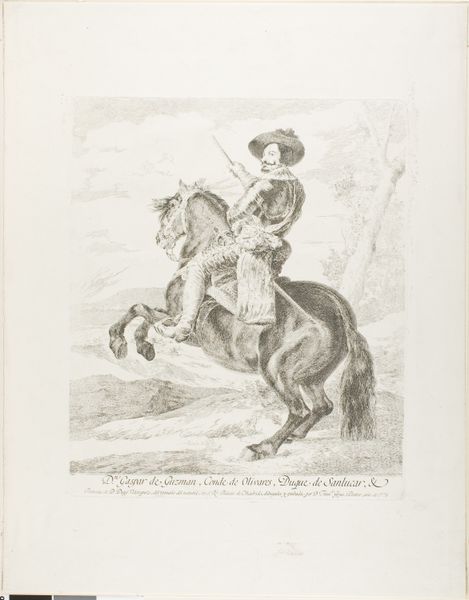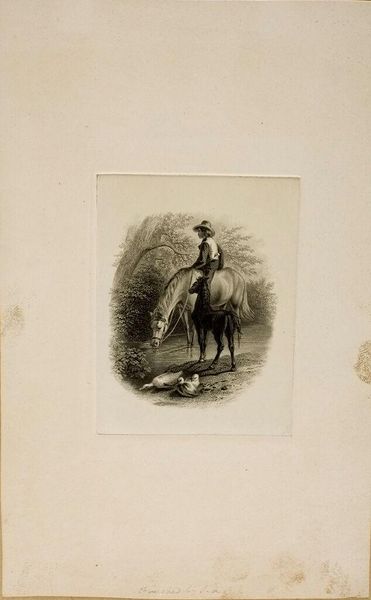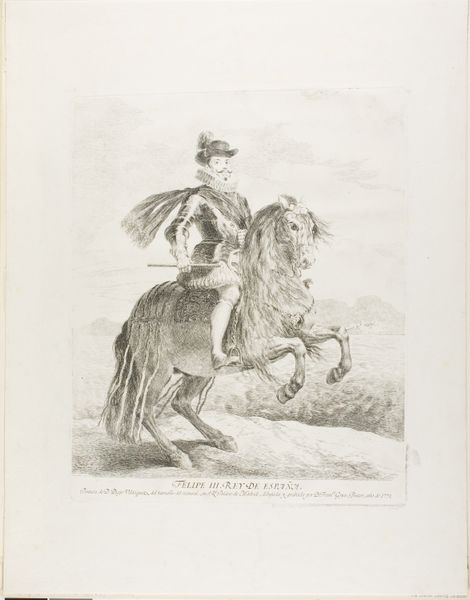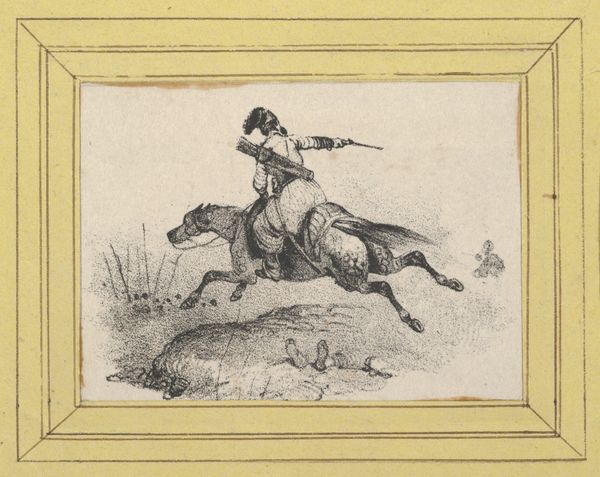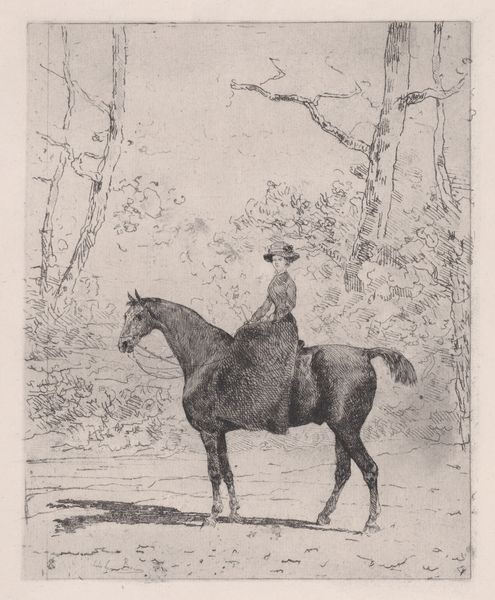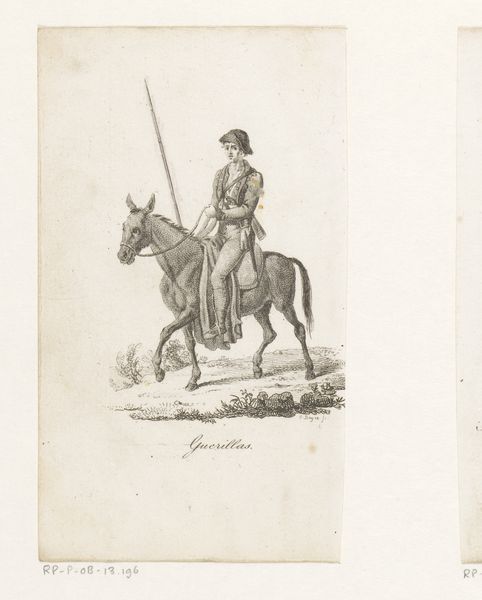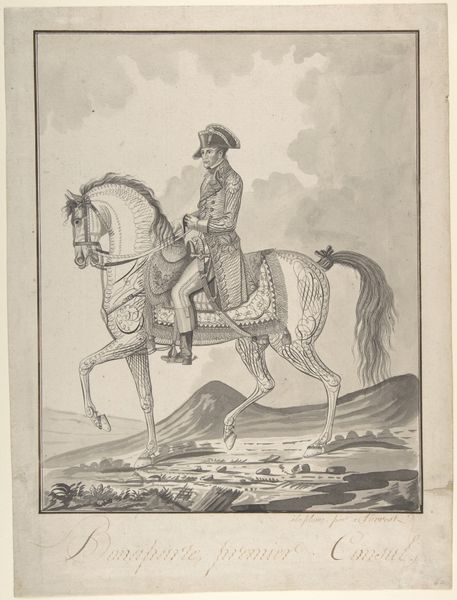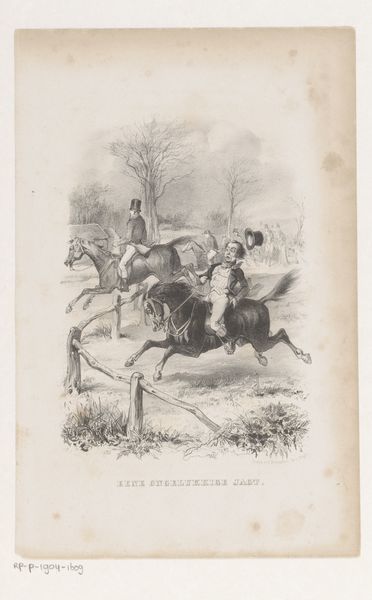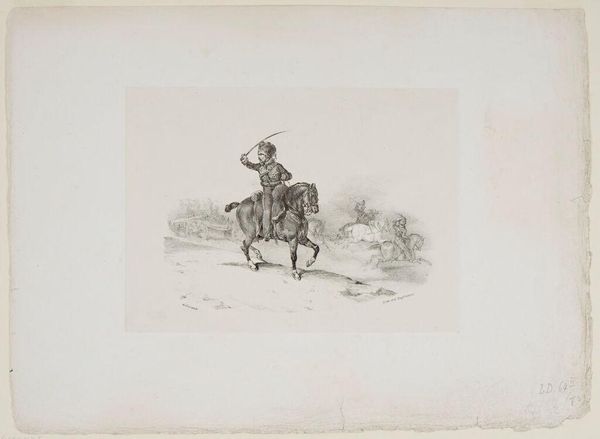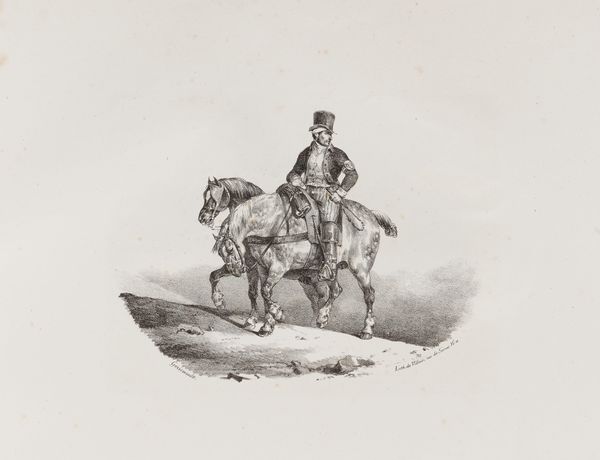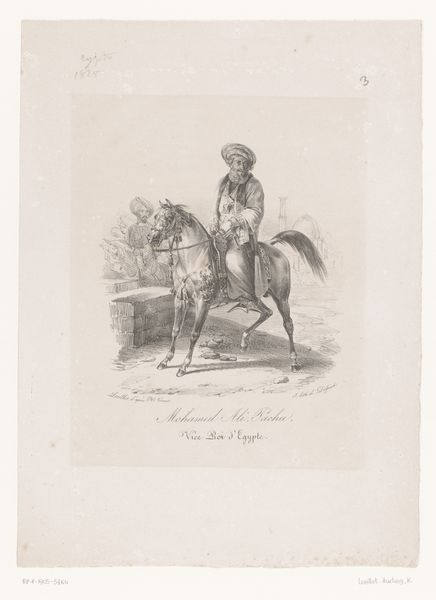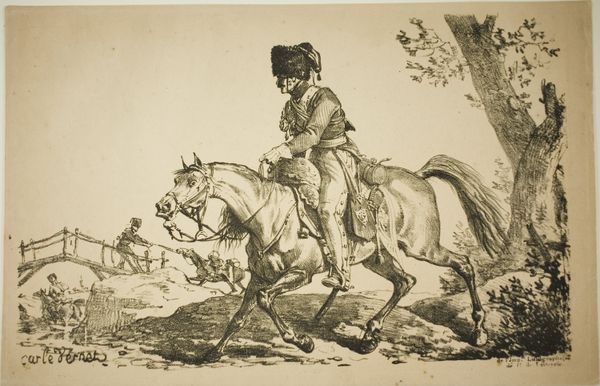
Dimensions: height 304 mm, width 232 mm
Copyright: Rijks Museum: Open Domain
Curator: Before us is "Ruiter ziet geest op een vlakte" or "Rider Seeing a Ghost on a Plain" by Adolphe Mouilleron, made sometime between 1830 and 1880. The Rijksmuseum holds this intriguing graphite drawing. Editor: There's a dramatic energy to this piece. The rider and his horse seem caught in a flurry, and this pale, ethereal figure materializes out of the landscape itself. It looks like a hastily rendered sketch, a work in progress, focusing solely on one particular subject, creating a heightened and suspenseful effect. Curator: The ghost figure certainly disrupts the perceived reality, doesn't it? Its form seems to coalesce from the mist and reeds. Ghosts often represent repressed memories, anxieties, or societal unease, so its placement in this scene invites contemplation on what haunts the rider. Consider too that this era, during and following the Industrial Revolution, grappled with great changes, perhaps this otherworldly manifestation stands for fears relating to cultural upheaval. Editor: What strikes me, looking at the medium of graphite, is its inherent potential for ghostly effects. The varying pressure applied to the pencil, the way it smudges so easily, allows for these semi-transparent, spectral renderings. I'm interested in how readily available graphite was at this time. It offered the public opportunities to access techniques of Romantic painting. Curator: A good point! That material accessibility connects it to Romanticism's emphasis on intense emotional experiences, particularly encounters with the sublime. Landscapes often mirrored the turbulent inner lives of the figures within them, just like this charging scene suggests an internal crisis, amplified by this apparition. The rider is moving forward as the ghost faces him. What does this moment portend for the figures caught up within this mysterious, emotional intersection? Editor: It almost cheapens this sense of high drama, though, when you think about graphite's use in mass-produced images too. Could this be aiming for popular appeal, even at the risk of sensationalism? I keep coming back to that material simplicity, how readily something so evocative could be produced and shared. Curator: And I keep coming back to the powerful image! The tension between the visible world and the unseen. These two realities offer different levels of experience for the human figure caught between worlds and for those viewers contemplating their psychological underpinnings. Editor: Right, between high art ideals and rapidly changing manufacturing techniques. An image can communicate both cultural narratives and tangible aspects of an industry at a given time, especially at an intersection such as this.
Comments
No comments
Be the first to comment and join the conversation on the ultimate creative platform.

